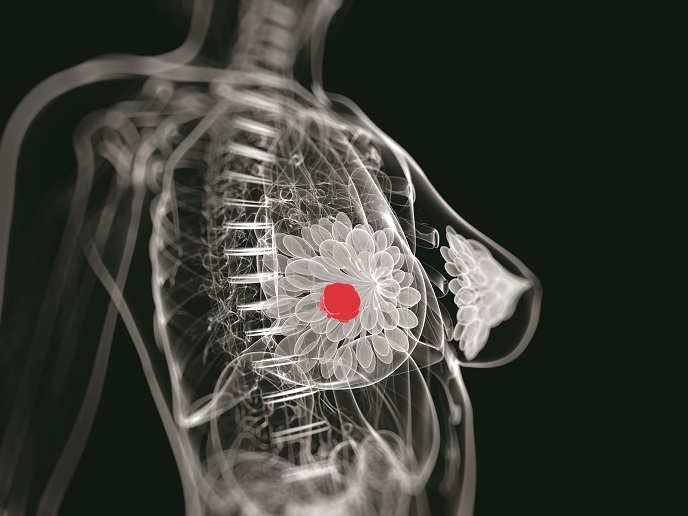Epigenetics explains how breast tumour cells escape hormonal treatment
Breast cancer cells usually have hormone receptors which, when bound to hormones, fuel cancer growth. Approximately 70 % of breast cancers are oestrogen (hormone) receptor positive (ER+). These patients are routinely treated for at least 5 years with hormonal therapies, with over 20 % of them relapsing within 10 years, risking that the cancer incurably spreads throughout the body. The exact mechanism that drives resistance to drug treatment, especially in the early phase, is poorly understood. The EU-funded EpiPredict (Epigenetic regulation of endocrine therapy resistance in breast cancer: A systems medicine approach to predict treatment outcome) project trained 12 multidisciplinary early-stage researchers (ESRs) to explore the role of epigenetic regulation to predict and prevent hormonal therapy resistant ER+ breast cancer.
Systems level epigenetic profiling
While each cell in the body contains the same genetic information, the epigenetic composition determines which genes are turned on or off, providing unique cell identity. Environmental factors like stress and nutrition can alter epigenetic regulation and affect conditions such as aging and disease. Since epigenetics is in principle reversible, it opens up the possibility of new therapies based on epigenetic editing. To explain highly dynamic changes in tumour cells and discover new epigenetic biomarkers and potentially new therapies, EpiPredict used a so-called ‘systems medicine’ approach. In practice this meant combining dedicated multidisciplinary tools and technologies, such as computer simulation, high throughput profiling, bioinformatics, single cell high-resolution mapping and epigenetic editing, to investigate the epigenetic behaviour of tumour cells and help identify the course of resistance development. Additionally, to further determine the ‘cause-consequence relationships’ of epigenetic regulatory mechanisms, EpiPredict generated a library of epigenetic editing tools. “Exchange of ideas, knowledge, information, data, protocols and tools was high on the agenda and largely covered by secondments across borders that became one of the highlights of EpiPredict,” says project coordinator Dr Pernette Verschure. “EpiPredict has generated an effective scientific network with excellent opportunities to foster this as a strong international hub in the field.”
Towards a new class of epigenetic biomarkers
The EpiPredict team discovered a handful of epigenetic regulatory principles for how tumour cells undergo multi-step adaptations, by switching genes on and off, to diversify when being exposed to hormone treatment. The Yin Yang1 protein was found to have a unique role in epigenetically driving the activity of the SLC9A3R1 gene and helping cancer cells grow and evade treatment. Also, a mechanism was identified as underlying early relapse from postmenopausal treatment, which suggested the involvement of an epigenetically-altered population of tumour cells. EpiPredict identified key changes in the metabolic composition of treatment adapted tumour cells, with a metabolic switch implicated in treatment survival. Metformin was noted as a promising compound for co-treatment options. Additionally, a rare, pre-adapted tumour population was identified, with high epigenetic plasticity. It was suspected that these cells have the selective advantage of outgrowing the other tumour cells during longer treatment, undergoing further ‘reprogramming’, so as to acquire complete resistance to treatment. “Although it is too early to talk about therapeutic use, our modelling work reinforced the molecular biology screening and validations, and vice versa,” says Dr Verschure. “But as we mainly analysed cell line models, a critical next step will be collaborating with clinical centres to test observations in patients’ tumours, to determine if epigenetic prediction tools can be used to monitor treatment response and whether epigenetic reversal could prevent resistance development.” This research was undertaken with the support of the Marie Skłodowska-Curie programme.
Keywords
EpiPredict, breast cancer, epigenetics, gene, tumour, hormone, oestrogen, resistant, ER+, metabolic, treatment







